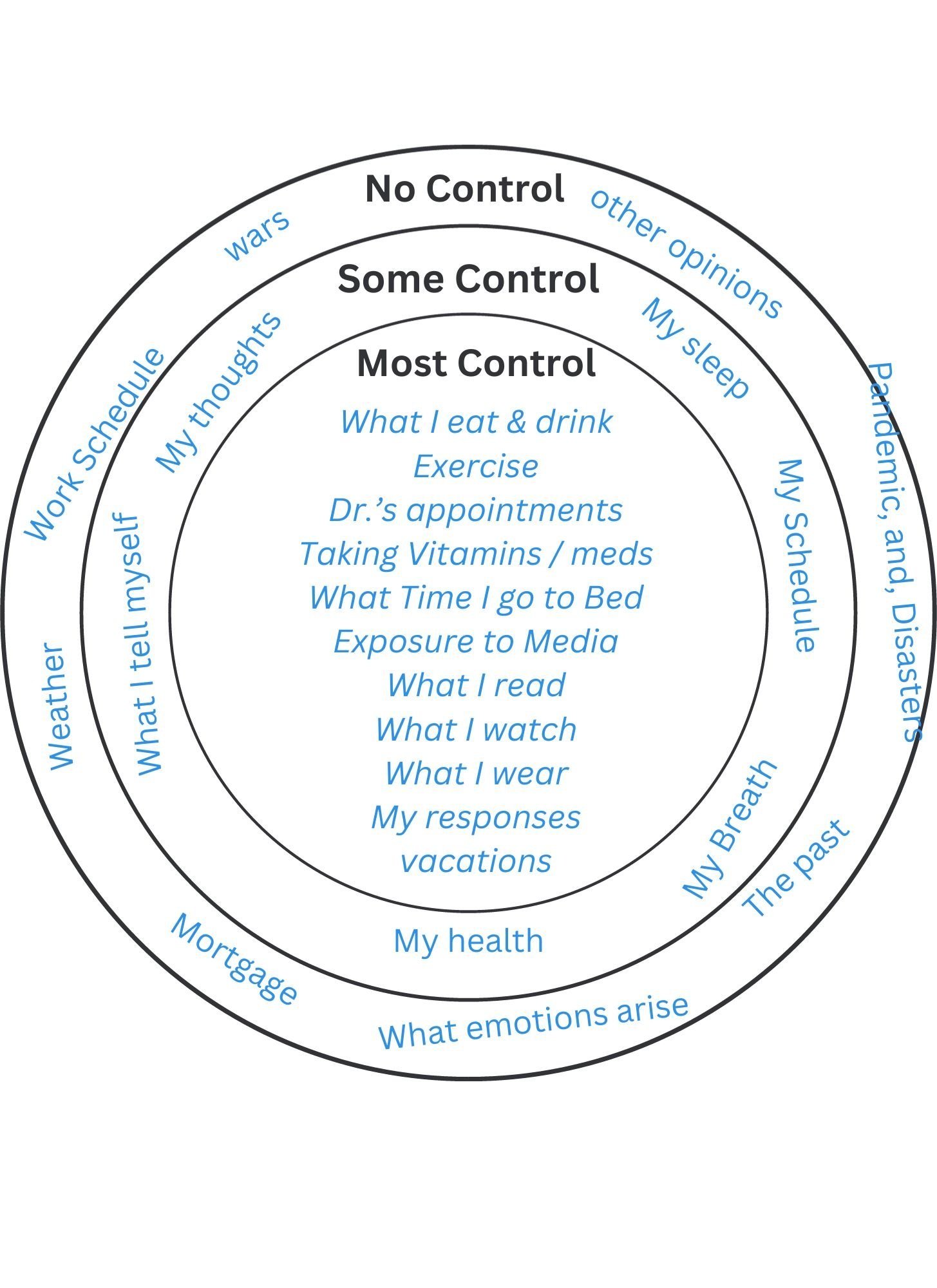How to Cope with War Anxiety: Advice From A Licensed Art Therapist
Images and stories of war can live in our minds, and our bodies. This article is aimed at giving you helpful tools to regain inner safety and meaning making in uncertain times. In a world that feels plagued by conflicts, unrest, and war, it's only human to experience heightened levels of anxiety, sadness, and anger. The constant news updates, images of destruction, and the uncertainty can take a toll on our mental health. However, it's crucial to remember that there are ways to cope with war anxiety.
War anxiety is a term used to describe anxiety from war-related media coverage. You may notice anxiety manifest as a racing heart, fluttering sensations in your stomach, nausea, or dizziness. Alternatively, war anxiety might also manifest as persistent worries, difficulty sleeping, restlessness, numbness, or nightmares. It's important to recognize that anxiety arises as a natural response to stressors, and modest amounts of anxiety can be adaptive — serving as a signal for your body to respond to a perceived threat. So what can you do? Here are some practical tools and tips from a licensed Art Therapist:
Self Assessment: Am I overexposed to media?
Everyone’s threshold and tolerance for war related media will be different, and that’s okay! Overexposure to war related coverage can lead to serious implications such as vicarious trauma. The first step is to assess if you’re overexposed to media. If you’re noticing any of these symptoms in response to media coverage pertaining to a war, it may be a signal that you’re over exposed.
Signs of overexposure: Nightmares, anxiety, panic, urge to control your environment, numbness, irritability, anger, rage, sadness, and hopelessness
If you are overexposed to media, or just feel overwhelmed by the coverage, here are some practical tools, tips and exercises to help regulate your nervous system and reconnect.
2. Limit media consumption, and be selective
Constant exposure to distressing news can exacerbate anxiety. While it's essential for many to stay informed, consider limiting your media consumption. Set specific times to check the news and choose reliable sources. Avoid excessive exposure, especially before bedtime, to promote better sleep and reduce the risk of heightened anxiety. Be Selective. Choose media consumption that is the most digestible for you. For some people, images can be more disturbing than hearing about the war on the radio. My suggestion would be to be honest with yourself and limit the type of media coverage to the source(s) that are most digestible for you.
3. Look for the helpers
To quote Daniel Tiger, “Look for the Helpers- there are always helpers.” Daniel learns an important lesson that is also a beloved quote from Mr. Rogers. When something bad happens, whether it’s a storm, natural disaster, or anything scary, Daniel learns that if you look closely, you will always find good people helping out those in need.
4. Channel your feelings into action
Stress and anxiety in our bodies needs a way out. The biggest take home here is to give yourself outlets that involve movement, and help you create meaning. Here are some examples of working with body anxiety:
Create art, volunteer, write, sing, take a walk, run, dance, scream, sway, rock, cook, clean, hug, or peacefully protest.
5. Make response art
Externalizing emotions is a way of expressing and honoring yourself. Your thoughts and emotions deserve a safe and contained place to live (on paper). After you make reaction art, you may want to consider what you want to do with it. There are many options, such as hanging it up, putting it in a box or drawer, or ripping it and using the torn paper to re-create another image.
6. Establish a routine and stay connected
Creating a daily routine can provide a sense of normalcy and control amidst chaos. Include activities that bring joy and relaxation, such as exercise, reading, or spending time with loved ones. A structured routine can act as a stabilizing force during times of uncertainty. Isolation can intensify feelings of anxiety. Maintain connections with friends and family, whether through virtual means or in-person when possible. Share your feelings with those you trust, and don't hesitate to seek support. Social support is a crucial factor in resilience during challenging times.
7. Take Care of yourself (really)
Taking care of your physical health affects your mental health. Ensure you are getting enough sleep, eating nutritious meals, and engaging in activities that bring you joy. Self-care is not a luxury but a necessity, especially in times of heightened stress. If you notice yourself feeling extra spacey, or “out of it”, these may be signs that your body is tuning out in order to protect yourself. If your anxiety becomes overwhelming, consider seeking professional help. Therapists and counselors can provide guidance and support tailored to your specific needs. Online therapy options make mental health care more accessible, even during times of crisis.
8. Focus on What You Can Control
While it's challenging to control external events, focus on aspects of your life that you can influence. Set achievable goals, whether they relate to your personal or professional life. Taking small, positive steps can contribute to a sense of empowerment. It may help to draw a circle, and write down the things that you can control inside the circle and things that you can’t control outside of the circle. Example Here:
Take Home Message
Coping with war anxiety requires a combination of self-care, mindfulness, and seeking support from others. In times of uncertainty, it's crucial to prioritize mental health and take proactive steps to manage anxiety. Remember, resilience is built over time, and by adopting these coping strategies, you can navigate through these challenging times with greater strength and well-being.Interested in trying out Art Therapy? Schedule your free consultation with our lovely intake coordinator.



